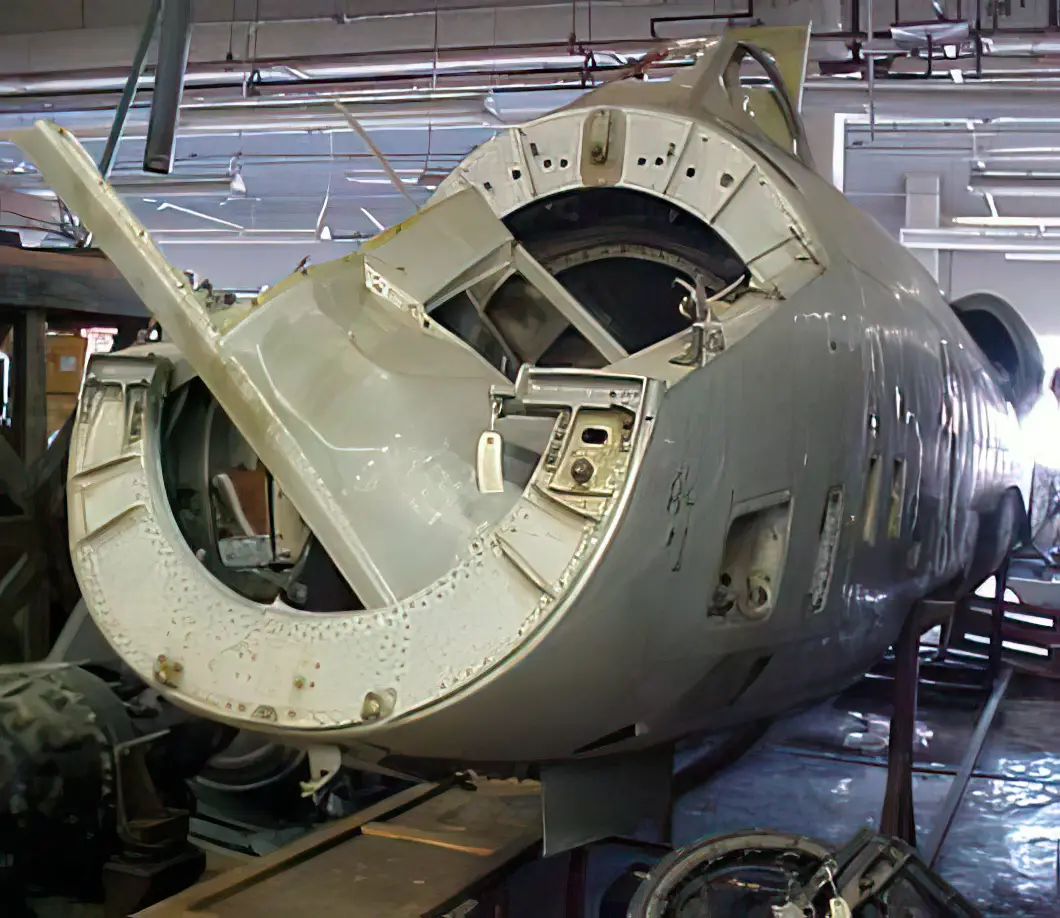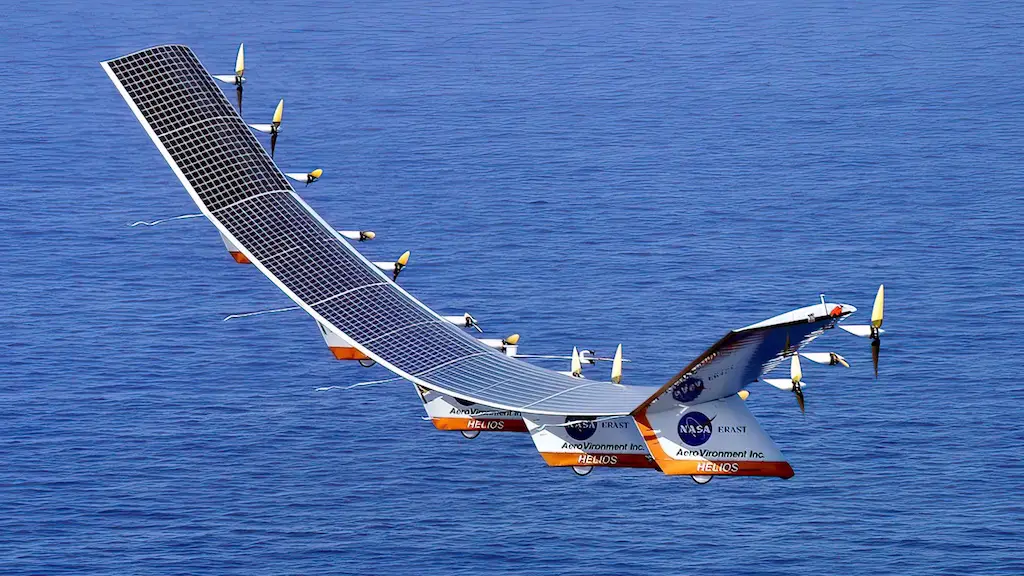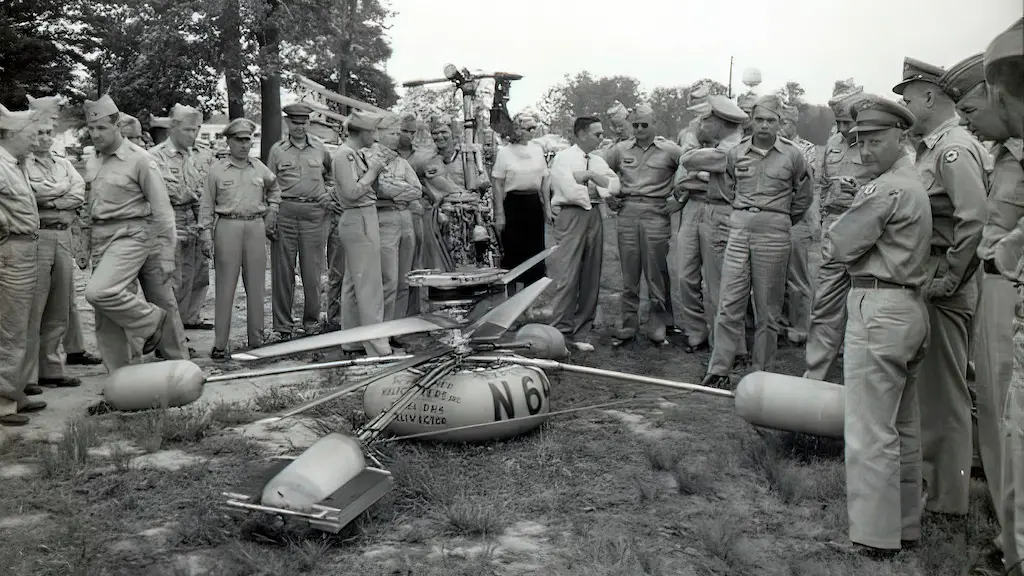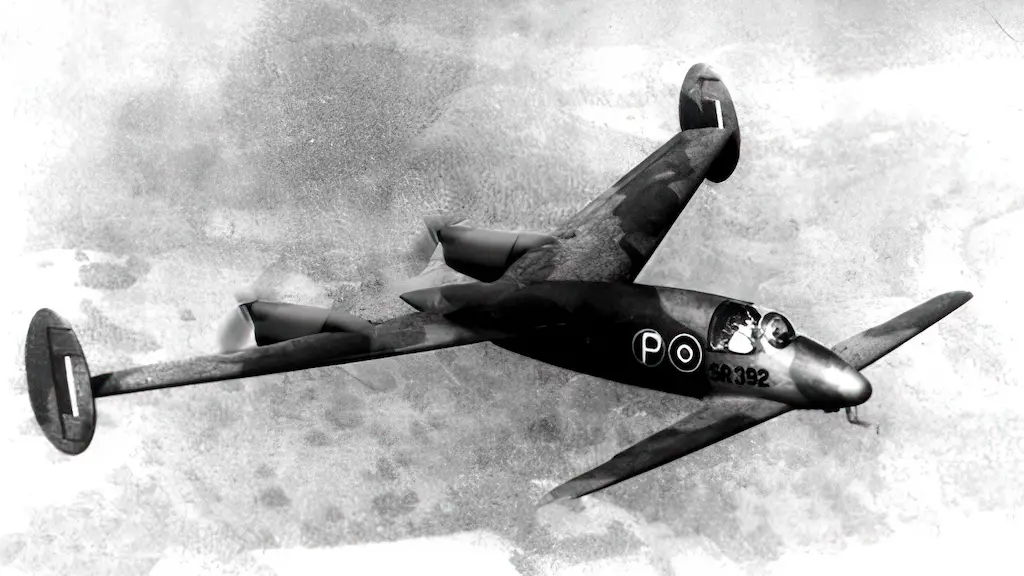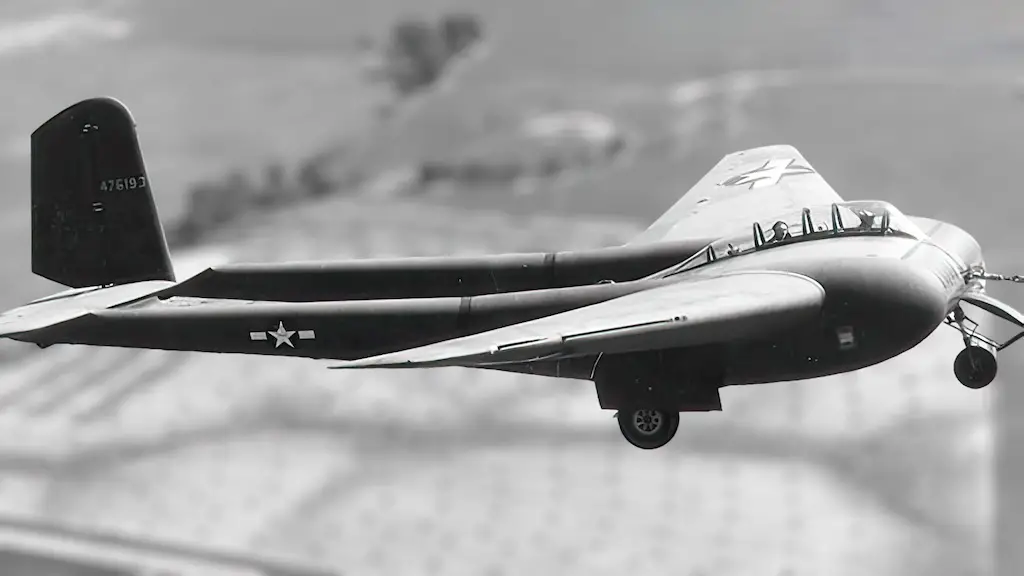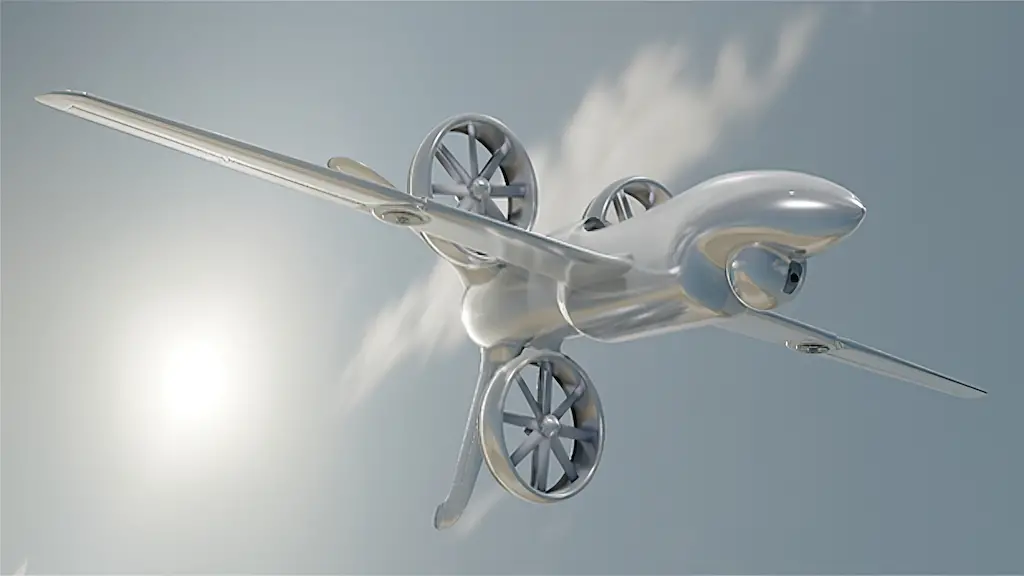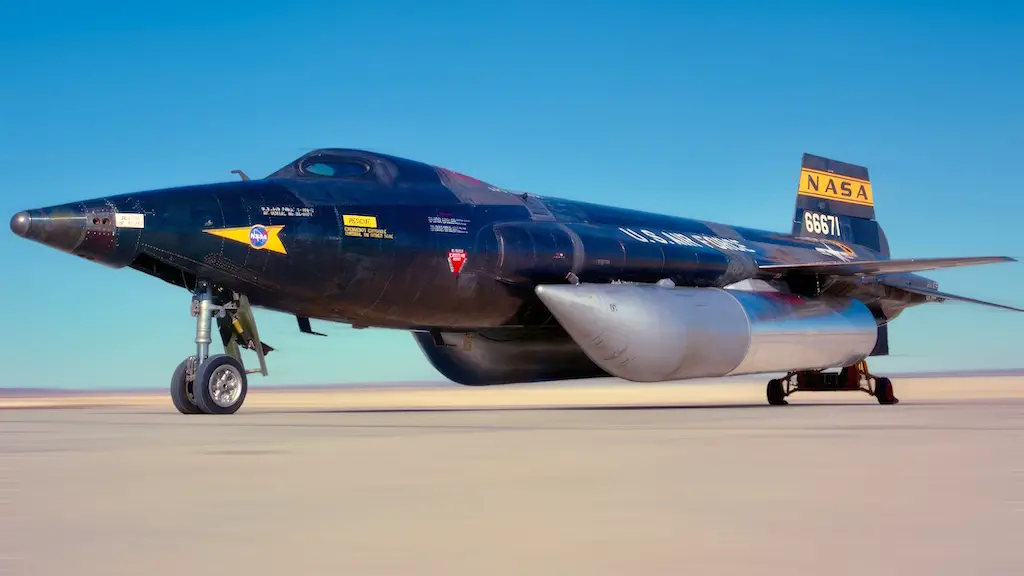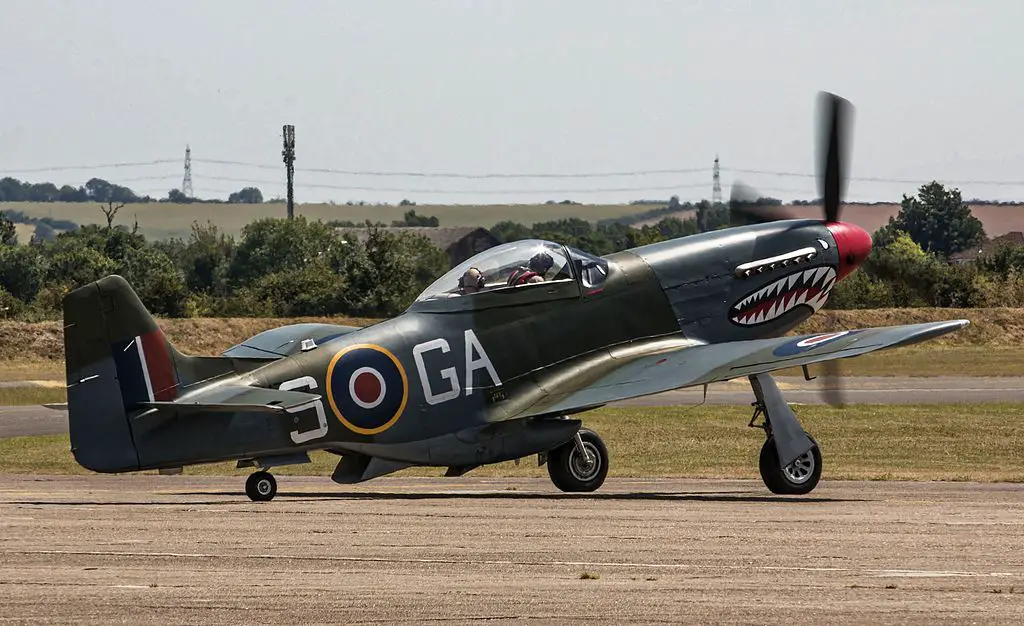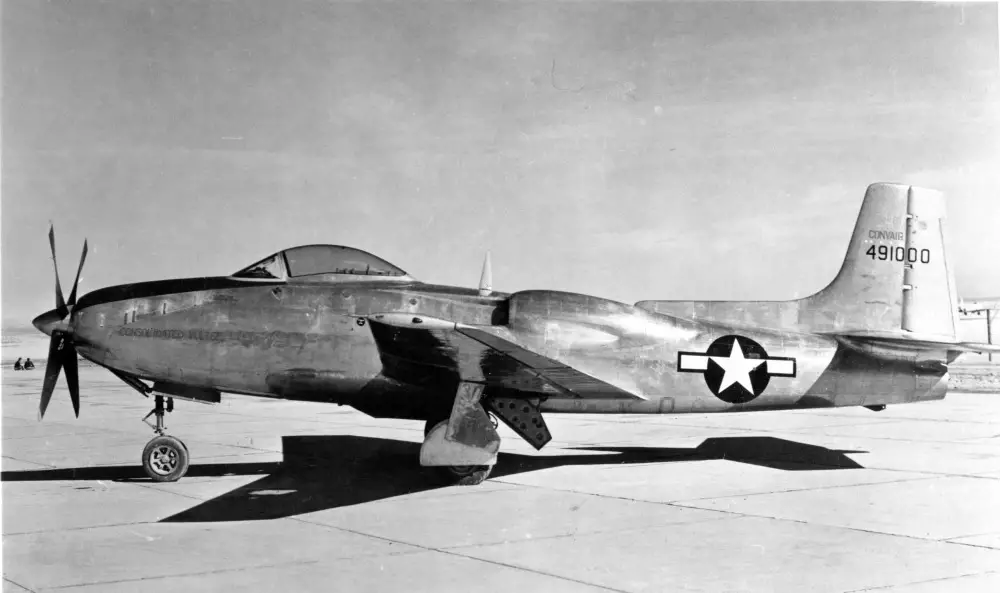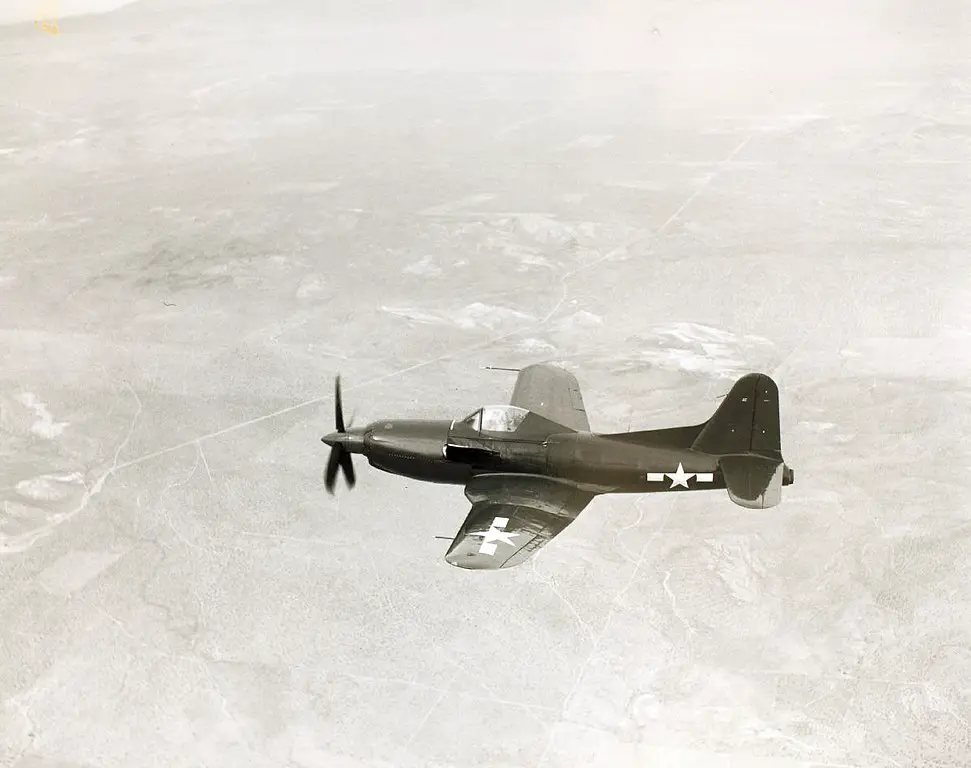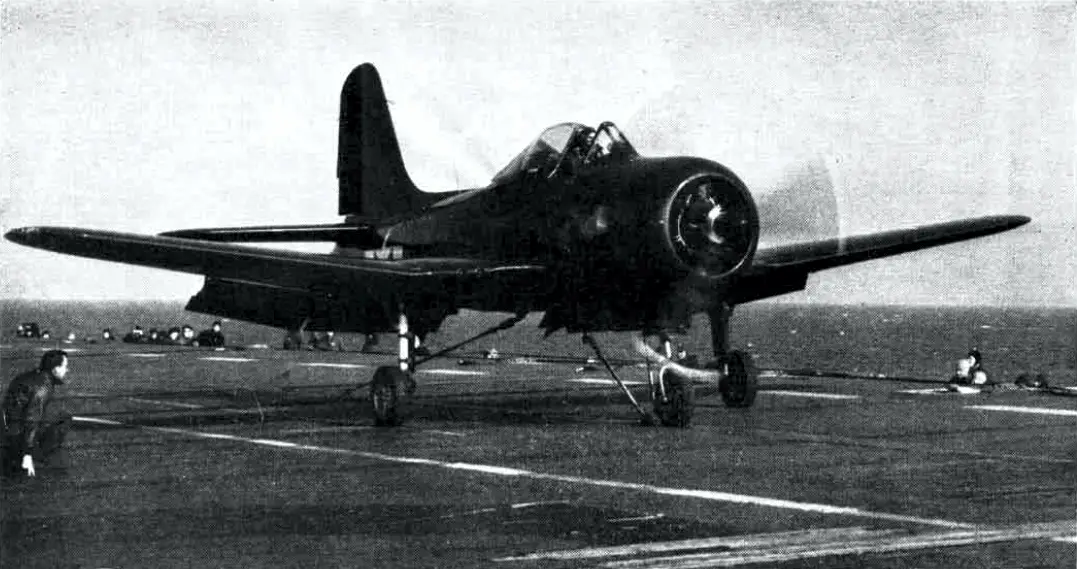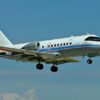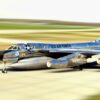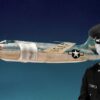Dawn of the jet era
At the dawn of the jet era, aircraft designers were still very cautious of jet engines. After all the technology was new and prone to all sorts of failures and malfunctions. Bearing in mind that ejection seats were also just a recent innovation pending wider adoption, test pilots flying prototypes equipped with only jet engines were seriously risking their lives.
Any mishap at a low altitude was fraught with fatal consequences. So, it was normal to use both airscrew and jet propulsion on an aircraft during the testing phase. As for Consolidated Vultee XP-81, it was specifically designed to combine the use of a turbojet and a turboprop.
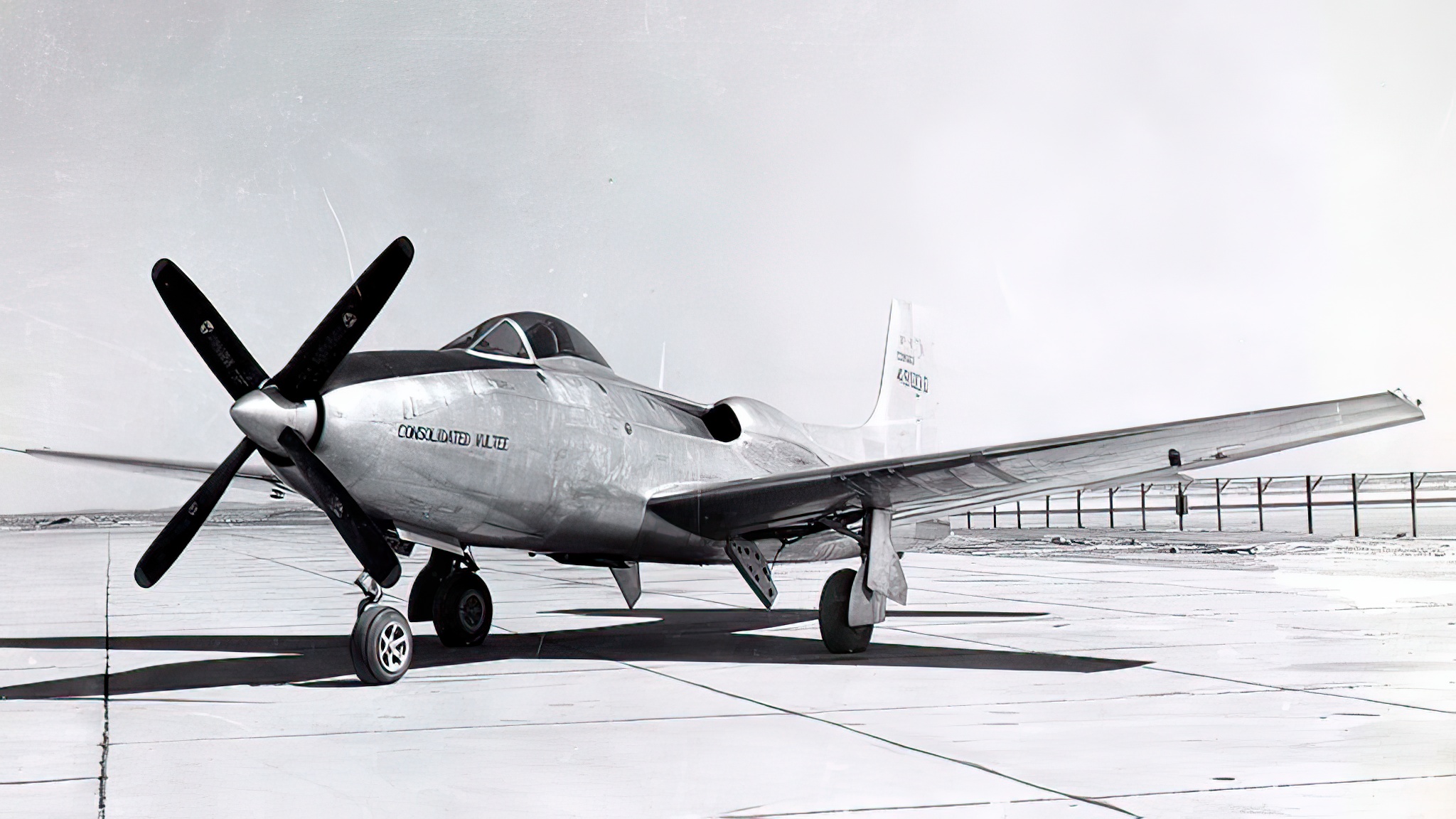
Flying far and striking fast
The XP-81 was conceived when the WWII was in full swing. Allied bombers had just started to regularly pound German cities and a strategic air campaign against Japanese home islands was to commence soon. Bomber squadrons desperately needed protection from enemy fighters during these raids.
However, at the time very few American fighters could escort long-range bombers deep into enemy territory. For the most part, that job was done by P-51 Mustang. But it’s always better to have several different aircraft capable of fulfilling the task. Besides, the Germans were already starting to field their first jet fighters and that needed a response, too.
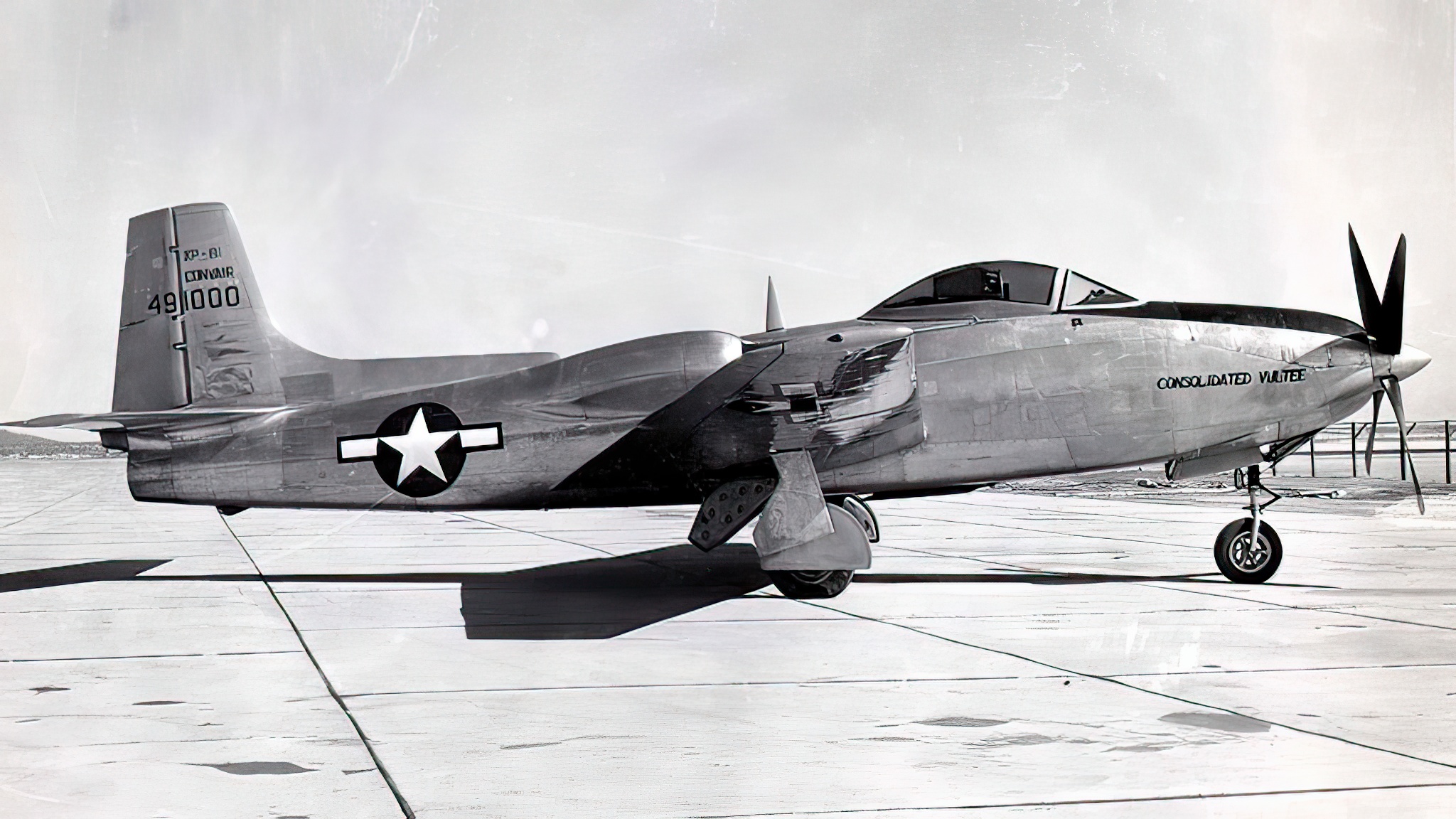
The USAAF, thus, needed a new fighter that could fly as far as its long-range bombers and as fast as latest jet fighters produced by other nations. To meet those requirements the recently merged Consolidated Vultee company (later known as Convair) proposed an aircraft design combining two new technologies: a turboprop for long-haul flight and a turbojet for rapid attack.
Making the first US turboprop
Consolidated Vultee received the USAAF order to build two XP-81 prototypes in February 1944. Exactly one year later the first aircraft was ready, although not entirely in its intended configuration. The XP-81 made its first flight powered by an Allison I-40 turbojet and a Packard V-1650 Merlin.
The latter was borrowed from a P-51D Mustang. The General Electric TG-100 turboprop intended for installation on the XP-81 was not ready yet due to development issues. So, for the time being Consolidated Vultee went on with the flight tests in that configuration.
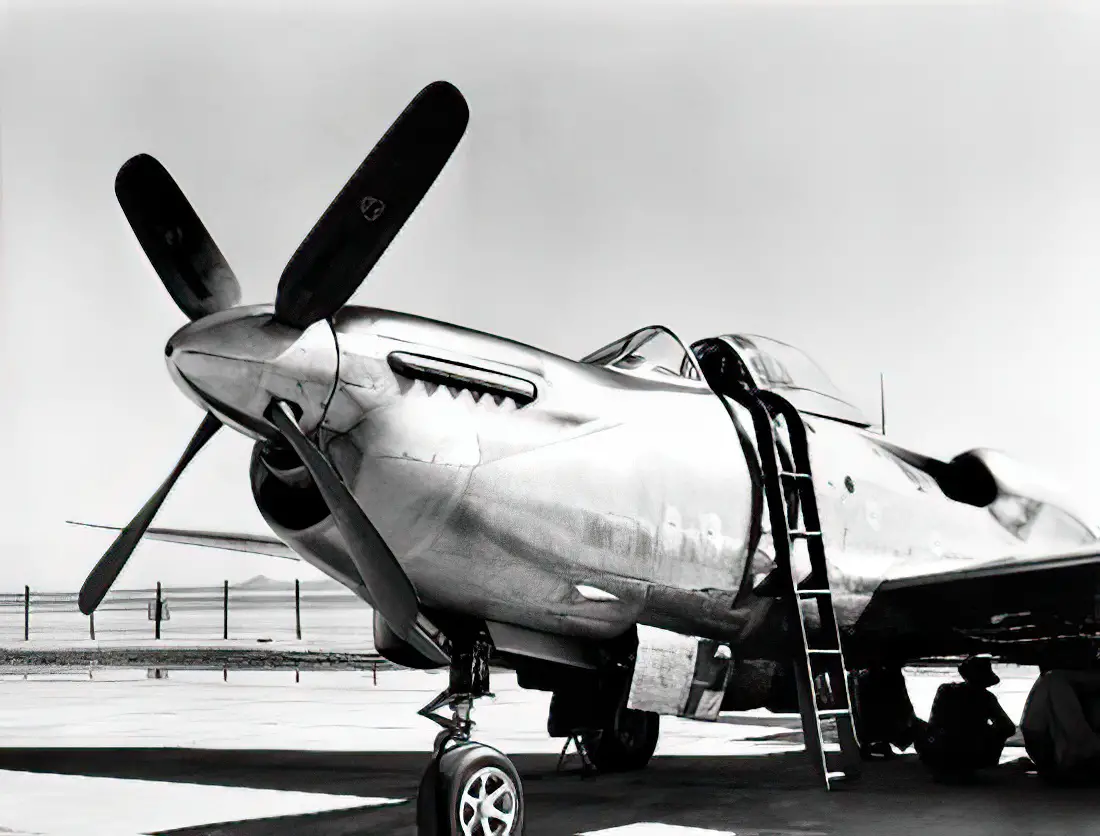
New configuration
The TG-100 finally became available by the end of the year and was installed in the XP-81’s nose to spin its four-blade propeller. On December 21, 1945, it made its first flight in that configuration, which was also the first flight of a US-produced turboprop aircraft and the first flight of an aircraft featuring a combination of a turboprop and a turbojet in the world.
However, TG-100 was still quite an inefficient and unreliable turboprop engine. It actually delivered mere 1,400 hp against expected 2,300 hp and suffered from a series of problems, requiring excessively frequent and thorough maintenance. The I-40 turbojets performance also left much to be desired. Consequently, the XP-81 was able to reach only 400 mph at sea level, the expectations being around 480 mph.
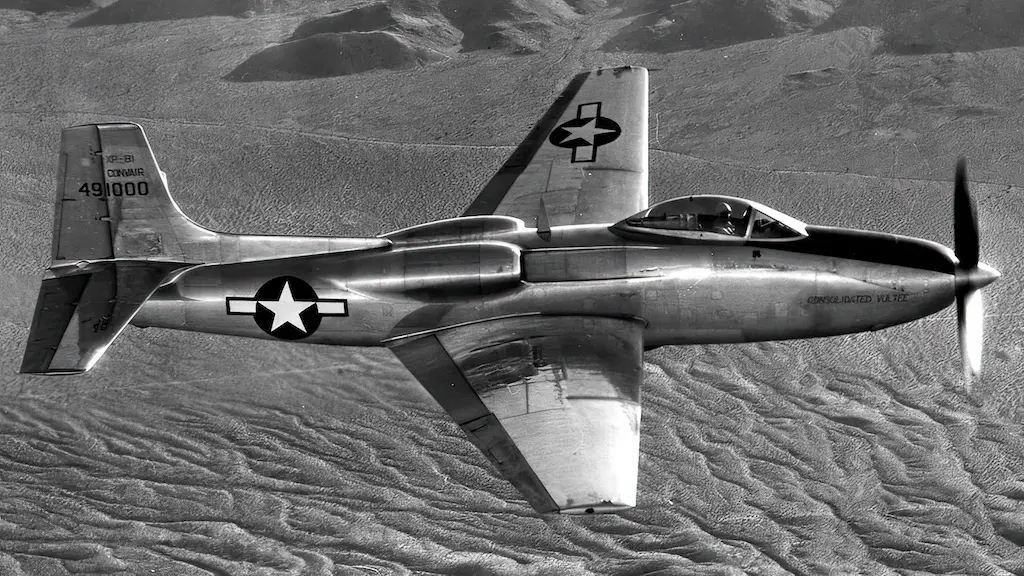
Propeller’s out of fashion
Although Consolidated Vultee completed and flew the second prototype in early 1946, the military’s interest in this machine was clearly waning by that time. The WWII was over and the slowly smoldering Cold War was setting its own demands regarding combat aircraft’s performance and capabilities.
Owing to the successes of sprawling jet fighter designs, overall confidence in jet propulsion was increasing by the day, and the idea of a compound power aircraft started looking obsolete. The USAAF cancelled its order for 13 pre-production aircraft and all testing under the program ended in 1947 after a total of 116 flights. The same happened to Ryan Aeronauticals FR Fireball and XF2R Dark Shark models, which also combined jet power with good old-fashioned airscrews.
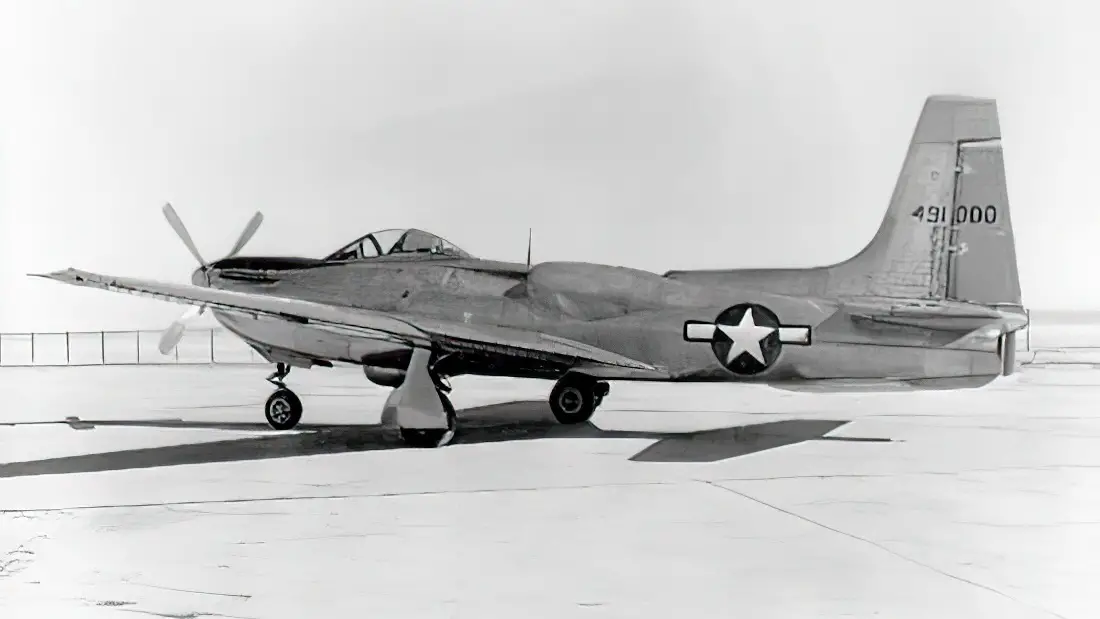
As of 2018, the two XP-81 prototypes in derelict condition were awaiting restoration at the National Museum of the United States Air Force in Dayton, Ohio.
